Lean Startup Book from Eric Ries – My Top 5 Learnings
Rating, Summary, Author & a lot more
Top 5 Keylearnings from the Lean Startup Book
The book The Lean Startup is the basics book for startups. Eric Ries shows which steps are necessary to find a functioning business model quickly and with calculated risk. Here are my top 5 keylearnings:
1. A startup has to be a speed boot. A startup cannot drive the engine of a cargo ship. It has to stay fast and agile. That is why the management methods of a group make no sense in a startup.
2. Every startup has only one goal. The only goal of every start-up is to find a sustainable business model. It’s not about the design of a business card, the next hip network meeting or the employee photo shoot. The only thing you have to worry about is finding a scalable business model.
3. Learn Fast – Fail Fast – Change Fast. Wages, rent and development have to be paid for. You don’t have time to write long strategy papers. You only have money until a certain point in time. So do a lot of experiments and find your scalable business model.
4. There are many different types of Minimal Viable Products (MVPs). It doesn’t always have to be a tangible prototype. With Facebook & Google Ads you can find out within a day whether people are willing to pay money for your product / service.
5. Always do a split test. Do not immediately publish a new feature to all users. Always do a split test. Recognize failures and values quickly.
 Who is Eric Ries?
Who is Eric Ries?
The author is a multiple founder, lecturer and consultant of large corporations. The Lean Startup story started with his blog Startup Lessons Learned. The book Lean Startup is the result of his experience in his own companies and the advice of other companies. The publication of the book catapulted his career upwards. He advises large corporations on how to introduce lean startup methods. He is regularly booked as a start speaker at major events. He currently spends most of his time with his newest company. The Long Term Stock Exchange (LTSE). The company’s aim is to open a stock exchange for companies with sustainable aspirations. Eric Ries currently lives in San Francisco.
Applicability of what has been learned from Lean Startup
The core message of the book, Build-Measure-Learn, is very easy to understand.
You build a Minimal Viable Product (MVP), carry out tests on real customers, draw your conclusions and start again with Build. You do that until you have found a working business model.
Everything else is secondary. Unfortunately, with my first startup I took care of everything secondary (business cards, SEO agency, networking events) and nothing came of the company.
It takes a little practice to keep focusing on what is really important. And find ways to validate the strategy in a simple, quick, and inexpensive way.
The main thing about the main thing is to keep the main thing the main thing.
The Engine of Growth section is easy to read, but difficult to implement. This is about the growth engine of the startup. Eric Ries suggests three possible methods.
Sticky = Few customers who you permanently tie to your product through regular new features.
Viral = Your customers take over the marketing. Word of mouth will spread your product like wildfire
Paid = You buy profitably new users through advertising.
The paid strategy is probably the easiest to implement, but for this you first need cash and then have to buy profitable customers. But try to create a viral product ?!
Comprehensibility of the content from Lean Startup
The contents of the book are underpinned with real stories from startups. Some sections contain very theory-based sections. There are many chapters and sections in the book. That makes reading very pleasant. Many topics are shown great with simple graphics.
TIP: If your business English is not that good, I definitely recommend reading the German edition.
Lean Startup explained in 500 Words
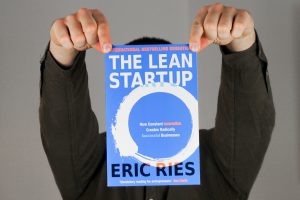
It was only a matter of time before a book like Lean Startup upset the entire management world. The book was published in 2011. At that time, Facebook & Co were on the advance, smartphones were mass-produced and globalization has reached its peak. The world was spinning faster.
This also meant that companies had to act faster. Eric Ries actually wrote the book for startups, but now he and his team also coach large corporations on how to use lean methods in their companies.
Nowadays it is no longer important to be the greatest, but to be the fastest.
How do you get to scale up?
The first step is to validate your ideas. You make hypotheses about your business model. “I believe I can profitably sell raccoons to zoos over the Internet.”
or
“I believe the perfect audience for my self-cleaning sink would be single mothers.”
Once you’ve made your hypotheses, you validate them.
There used to be no 3D printers or Facebook
The best way to test your hypotheses is with an MVP. So a minimum viable product. Something that is not perfect, but fulfills your core value promise.
For the raccoons, that could be a landing page. A video by the sinks. There are many different types of MVPs. It doesn’t always have to be a tangible object. It has to convey your core values promise so that you can validate your hypotheses.
Types of MVPs:
- Online advertisements
- Waiting list
- Crowdfunding
- Wizard of Oz
- Smoke test
- Landing Page
- Concierge test
- A Problem Solution Interview
Time to go round in circles
The core of the Lean Startup book is the Build-Measure-Learn cycle. Once you’ve created your prototype, you start collecting data.
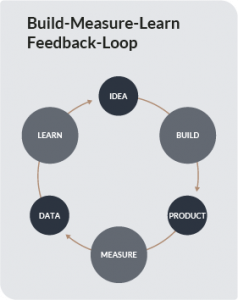
Measure up
You run out into the street and interview your potential target group. There is now a lot of reading material on this topic, such as the Book Talking to Humans*.. There you will find detailed instructions and guidelines on how and where you can interview your target group. You can also do this online, but at the very beginning you have to speak to your target audience in person. You don’t get that many interviews in quantitative terms, but qualitatively you will quickly notice that these conversations are worth their weight in gold.
Learn
After the interviews, you evaluate your data, create new hypotheses, build a prototype again and interview your target group. You keep doing this until you have validated hypotheses that can be expanded into a scalable and sustainable company.
The cycle never ends completely. Instead, it becomes more finely divided. Instead of checking the whole business model, you check individual features of your product, the design of your website, your advertisements, etc. All the things that are important to your main metrics. But which key figures are important?
100,000 followers won’t do you any good
One chapter deals in detail with the topic of vanity metrics. These are key figures that make you look good at the regulars’ table, but have little meaning for your company. These numbers include the number of followers, the number of press releases about your company, or those numbers that can only go up (e.g. total number of downloads of your app). These KPIs have no meaningfulness about your only true goal. Build a sustainable and scalable business model.
CONCLUSION: If you have an idea for a company or are already fully in the process of founding it, you have to read this book. It helps you to stick to the core of your idea and build a sustainable business model from it.
Why you should read the Lean Startup when you doing the Power MBA:
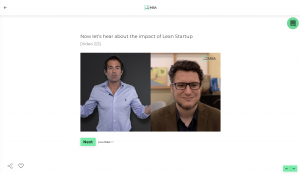
Eric Ries is something of a living legend in the startup world. Like his management methods, his book has revolutionized the market. In the Power MBA you have the chance to learn the lean startup concept directly from him. He teaches part of the 3rd module TESTING BUSINESS IDEAS & LEAN STARTUP. There he gives valuable insights into his work with hundreds of companies.
He shows you which mistakes are made again and again with the Lean approach, how successful companies have implemented the methods and what types of MVPs still exist.
In order to be optimally prepared for these lessons, I recommend his books Lean Startup* & The Startup Way* to you.
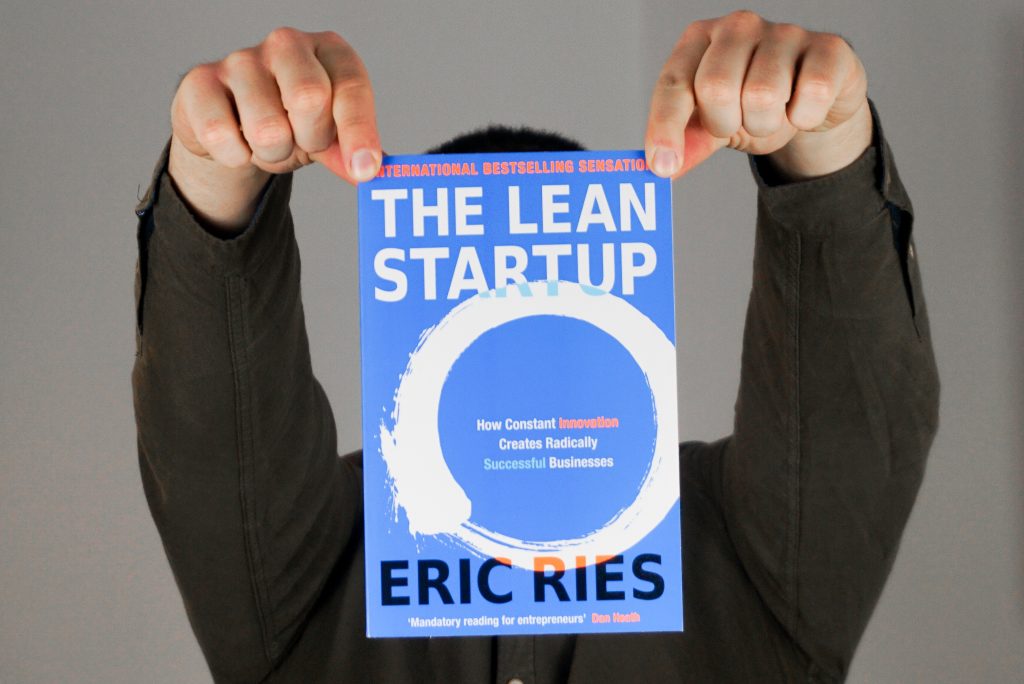
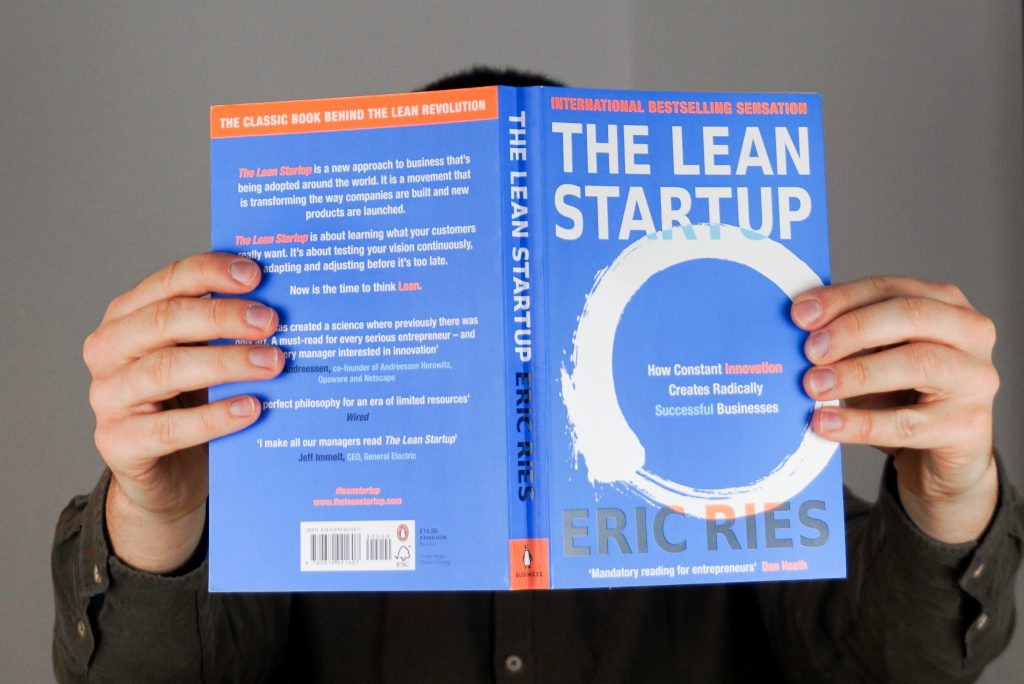
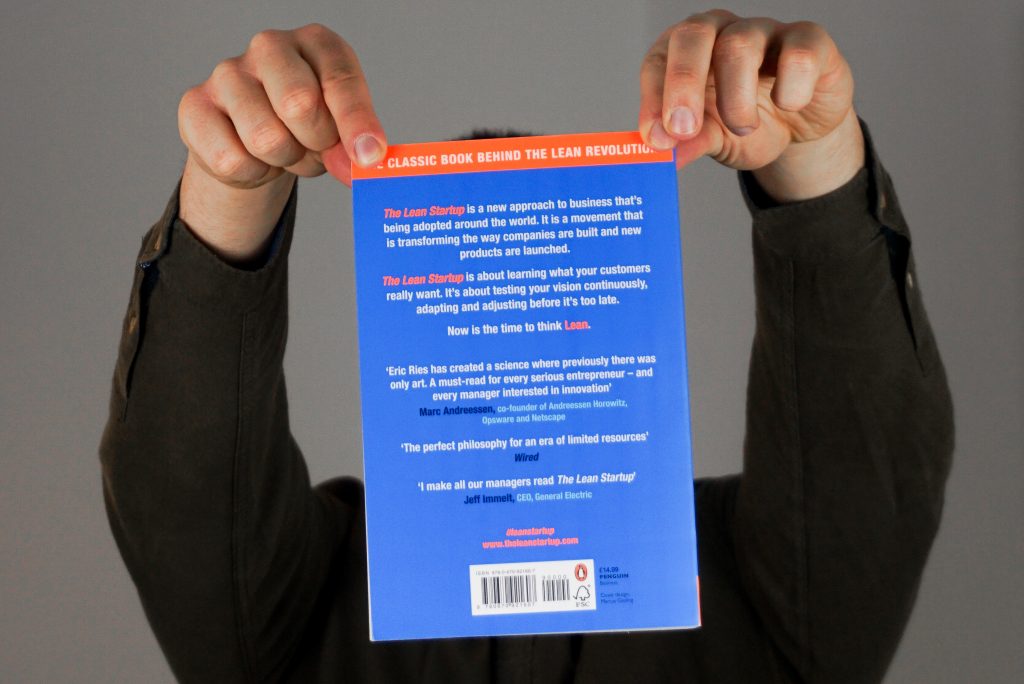
 Who is Eric Ries?
Who is Eric Ries?